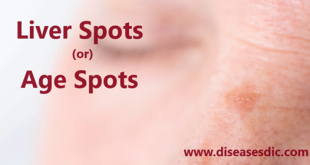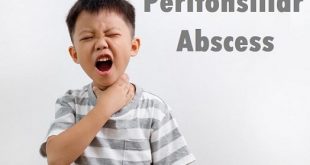Definition
Pemphigus Vulgaris is an autoimmune disorder that involves blistering and erosion of the skin and mucous membranes. It occurs almost exclusively in middle-aged or older people. The primary lesion of pemphigus vulgaris is a soft blister filled with clear fluid that appears on healthy or irritated skin. Many cases begin with blisters in the mouth, followed by skin blisters that may come and go. The blisters inside the mouth can make it hard for the person to eat.
Pemphigus Vulgaris
The rupture of blisters on the skin may be painful and limit the person’s daily activities. Complications due to infections can be serious and the damaging nature of the blisters can cause loss of body fluids and protein. The exact cause is unknown, but the blisters in are associated with the binding of antibodies to the skin cells.
Treatment is aimed at reducing symptoms and preventing complications and may include the use of corticosteroids, immunosuppressive drugs, and more recently immunotherapy. It may require long term treatment to keep it in remission.
Pathophysiology
Pemphigus vulgaris is an autoimmune, intraepithelial, blistering disease affecting the skin and mucous membranes and is mediated by circulating autoantibodies directed against keratinocyte cell surfaces. In 1964, autoantibodies against keratinocyte surfaces were described in patients with pemphigus. Clinical and experimental observations indicate that the circulating autoantibodies are pathogenic. An immunogenetic predisposition is well established.
Blisters in pemphigus vulgaris are associated with the binding of IgG autoantibodies to keratinocyte cell surface molecules. These intercellular or pemphigus vulgaris antibodies bind to keratinocyte desmosomes and to desmosome-free areas of the keratinocyte cell membrane. The binding of autoantibodies results in a loss of cell-to-cell adhesion, a process termed acantholysis. The antibody alone is capable of causing blistering without complement or inflammatory cells.
Pemphigus Vulgaris risk factors
It isn’t contagious and cannot be transmitted from one person to another. It also doesn’t appear to be transmitted from parent to child. However, a person’s genes can put them at a higher risk for the condition. If your parents or other family members had or have the condition, you’re more likely to develop it.
It can affect people of all races, genders, and ages. However, the condition is more common in the following groups:
- People of Mediterranean descent
- Eastern European Jews
- People who live in the rainforests in Brazil
- Middle-aged and older adults
Causes of Pemphigus Vulgaris
Our immune system makes antibodies to fight infection. Normally these antibodies do not attack our own body. However, in an autoimmune disease, such as pemphigus vulgaris, the immune system makes antibodies (autoantibodies) that work against tissues in the body.
- The autoantibodies in pemphigus vulgaris attack proteins called desmogleins. These proteins are present on the cells in the outer layer of skin (the epidermis) and form the “glue” that holds the cells of the skin together.
- When the autoantibodies formed in pemphigus vulgaris attack the desmoglein proteins, the cells in the skin and mucous membranes no longer hold together and separate. This causes blisters and erosions that are typical of pemphigus Vulgaris.
- Although it is known that antibodies to desmoglein cause pemphigus Vulgaris, it is still not clear why some people develop these autoantibodies.
Pemphigus Vulgaris affects males and females equally. It can start at any age but is most common in adults between 40-60 years old. It affects people of all races but is more common in some people, for example, people of Jewish or Indian origin. Pemphigus Vulgaris is not an infection and therefore cannot be caught or passed on to anyone else.
Symptoms
About 50% of people with this condition first develop painful blisters and sores in the mouth. This is followed by skin blisters. Skin sores may come and go.
The skin sores may be described as:
- Draining
- Oozing
- Crusting
- Peeling or easily detached
Symptoms of pemphigus Vulgaris
They may be located:
- In the mouth and down the throat
- On the scalp, trunk, or other skin areas
pemphigus Vulgaris in mouth
Complications of Pemphigus Vulgaris
Pemphigus Vulgaris can cause very extensive, life-threatening erosions, especially if the diagnosis is delayed. Other potentially severe complications may include:
- Secondary bacterial infection
- Fungal infection, especially candida
- Viral infection, especially herpes simplex
- Nutritional deficiencies due to difficulty eating
- Complications of systemic steroids especially infections and osteoporosis
- Complications of immune-suppressive treatments
- The psychological effects of severe skin disease and its treatment (anxiety and depression)
Diagnosis and test
It is advisable your general practitioner refers you to a dermatologist or an oral medicine specialist. These specialists will be able to make a provisional diagnosis of pemphigus Vulgaris by examining the affected area of skin and in the mouth.
A biopsy of a blister may be taken to confirm the diagnosis. The biopsy sample will be processed in the laboratory and examined under the microscope. Part of the biopsy sample will be examined by a technique known as direct immunofluorescence to demonstrate the presence of pemphigus Vulgaris autoantibodies in the skin.
Autoantibodies can be measured in the blood (indirect immunofluorescence). Measurement of autoantibodies in the blood is a useful test to monitor how active the disease is and can help determine if a change of treatment is needed.
Treatment and medications
These are common treatments for pemphigus Vulgaris:
Better oral healthcare: Blistering may affect the health of your mouth. So working with your dentist to take the best care of your teeth and gums is important.
Oral prednisone and topical steroid creams: These may be prescribed to treat the inflammation.
Immune suppressants: These medicines may be a helpful alternative to steroids.
Plasmapheresis or intravenous immunoglobulin: People whose pemphigus vulgaris does not respond to other forms of treatment may need more intensive treatments. This may include replacing blood plasma and infusions with healthy immunoglobulin.
Follow up: This condition may return, even after successful treatment. Go to all follow-up appointments.
It can take 2 to 5 years or even longer treat this condition. Also, treatments may have serious side effects. Talk with your healthcare provider about possible side effects and how to manage them.
Self-help tips
To help cope with pemphigus Vulgaris:
- Use a soft toothbrush and avoid spicy, crispy or acidic foods if you have blisters in your mouth
- Take painkillers or use anesthetic mouthwashes to relieve mouth pain, particularly before eating or brushing your teeth
- Practice good oral hygiene – brush your teeth regularly and use antiseptic mouthwash; you should also have regular dental check-ups
- Avoid activities that could damage your skin, such as contact sports
- Keep cuts or wounds clean to prevent serious skin infections
- Contact your GP or dermatologist immediately if you develop symptoms of an infection, such as a build-up of pus under the skin, or your skin becoming very painful, hot and red
 Diseases Treatments Dictionary This is complete solution to read all diseases treatments Which covers Prevention, Causes, Symptoms, Medical Terms, Drugs, Prescription, Natural Remedies with cures and Treatments. Most of the common diseases were listed in names, split with categories.
Diseases Treatments Dictionary This is complete solution to read all diseases treatments Which covers Prevention, Causes, Symptoms, Medical Terms, Drugs, Prescription, Natural Remedies with cures and Treatments. Most of the common diseases were listed in names, split with categories.








The information is very accurate here but would like to add that someone I know did suffer from that due to using antibiotics for extended time. was very hard to identify the sickness at first until an immunologist did.